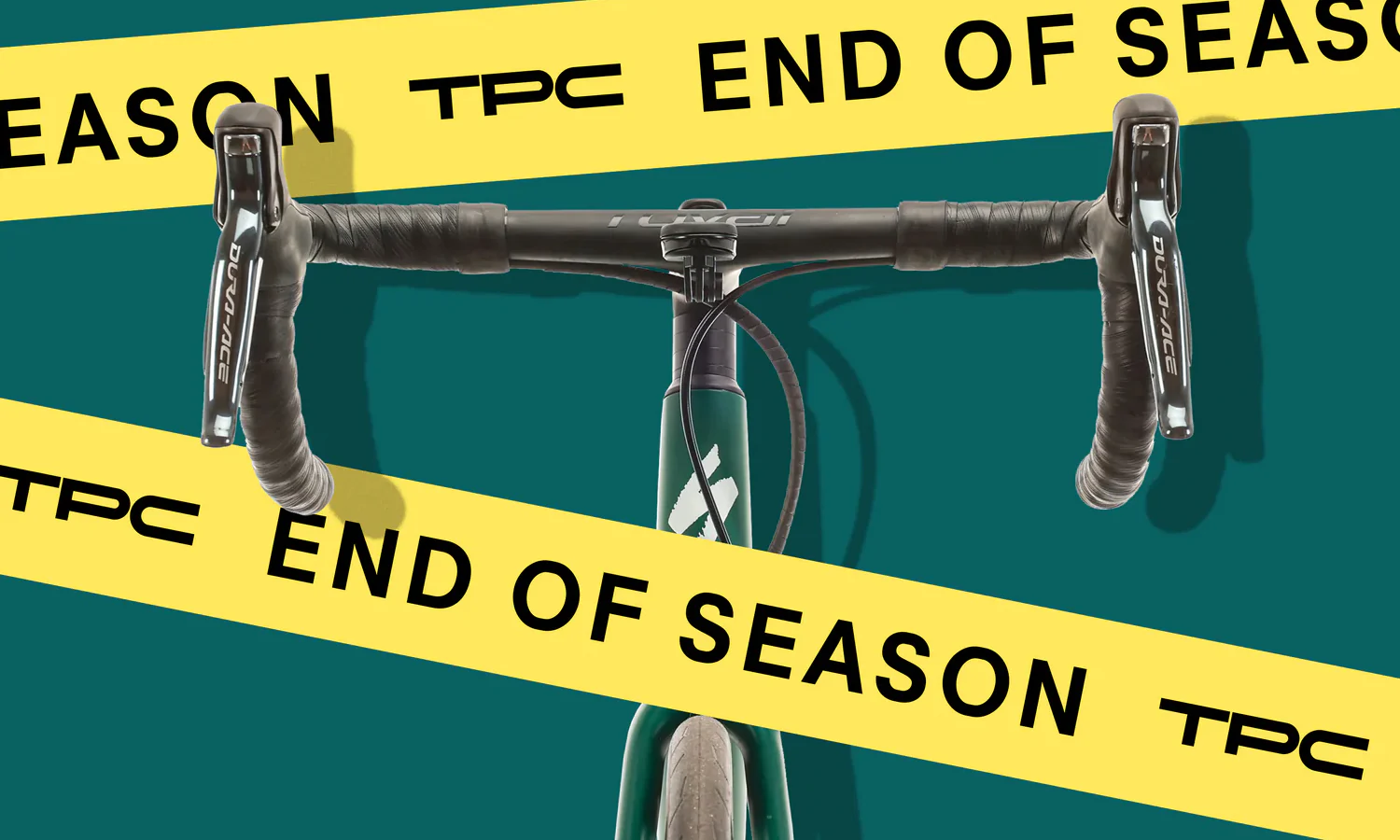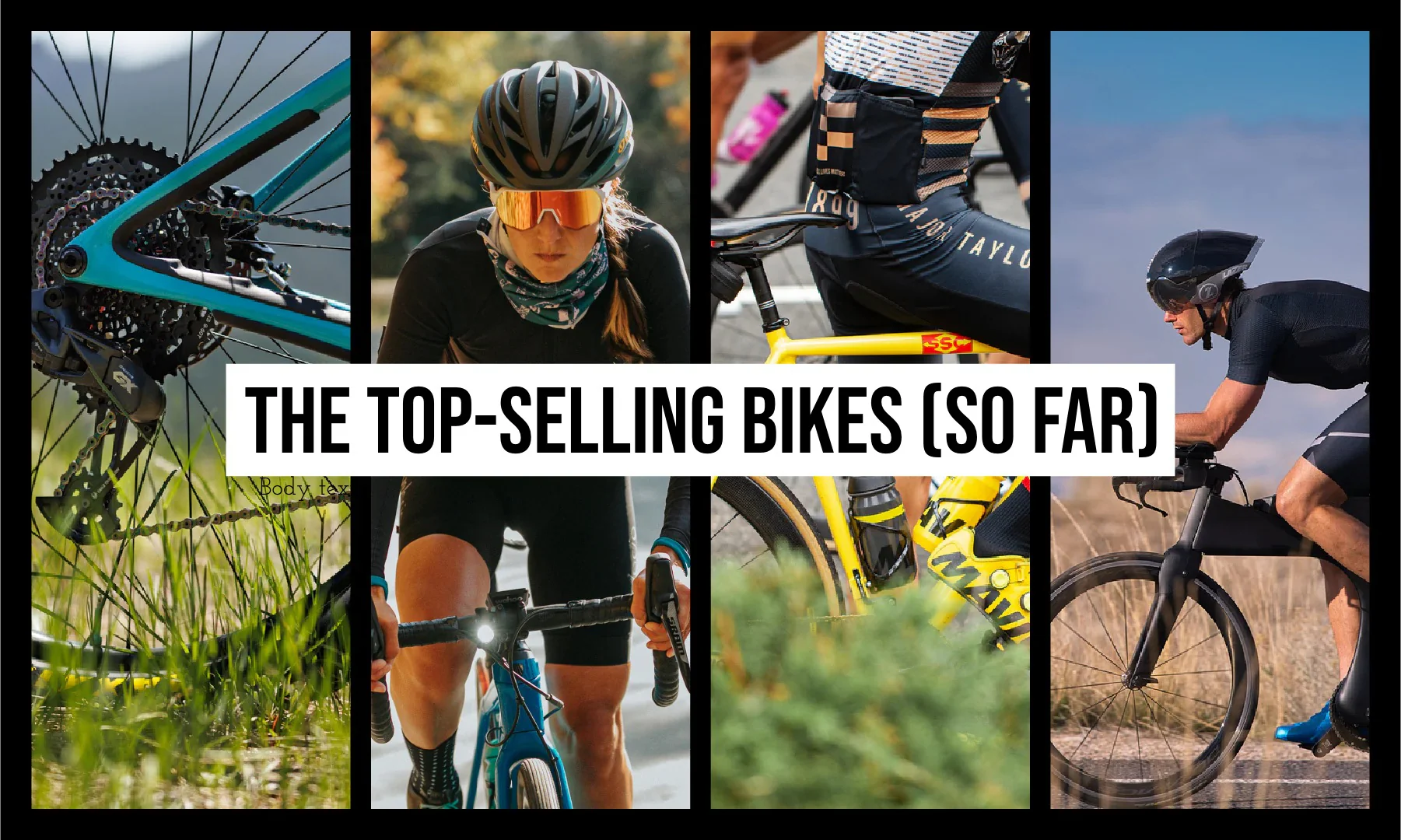Photo: John Watson
Many riders are drawn to the low and aggressive race bikes — what the professionals are riding. But chances are, you aren’t a pro cyclist. If you’re an average rider (like me), do you really need an ultra-stiff pro-level road racing bike? Or would you rather ride a bike that gives you a comfortable riding experience?
This is where endurance road bikes come in. Compared to road race bikes, they provide more comfort and compliance, especially over rough road surfaces and long-distance rides. Most riders would actually be better served by a comfortable and relaxed endurance bike than a stiff race bike.
We'll cover the major differences between road race bikes and endurance bikes and explain why endurance bikes are a great choice. Hopefully, armed with this knowledge, you can make a better decision about what type of bike is right for you.
What is an endurance bike?
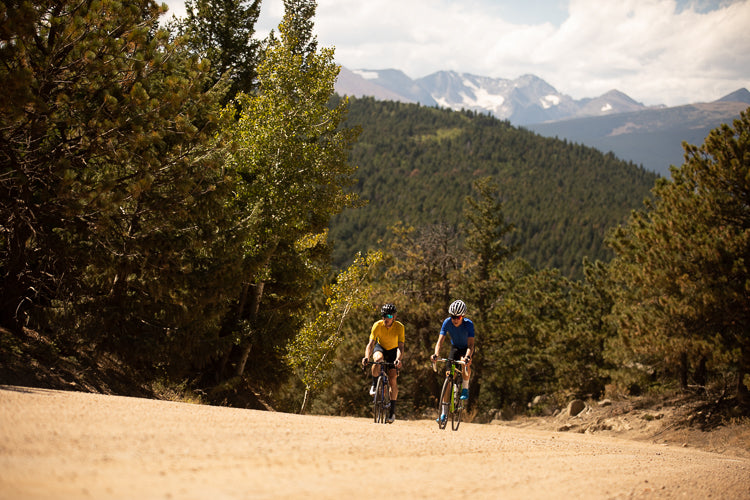 Dirt roads won't stop an endurance bike.
Dirt roads won't stop an endurance bike.
An endurance bike is a more versatile road bike. It can race, take on gran fondos, jump in fast group rides, and grind out your daily commute. It can even venture away from smooth pavement and comfortably explore rough roads and even some dirt and gravel. It isn’t as laser-focused as a race bike, allowing it to cover a much wider range of riding conditions.
Most major road bike manufacturers produce both dedicated road racing bikes and endurance road bikes. Some also make aero road bikes or dirt-focused gravel bikes to cover the full spectrum of drop-bar riding. The table below gives examples for each style of bike offered by some of our most popular brands:
|
Brand |
Aero Road |
Road Race |
Endurance |
Gravel |
|
Specialized |
Venge |
Tarmac |
Roubaix |
Diverge |
|
Trek |
Madone |
Emonda |
Domane |
Checkpoint |
|
Cannondale |
SystemSix |
SuperSix Evo |
Synapse |
Topstone |
|
Giant |
Propel |
TCR |
Defy |
Revolt |
|
Canyon |
Aeroad |
Ultimate |
Endurace |
Grail |
For this article, we'll focus on the endurance column. The Roubaix, Domane, and Synapse are among our top-selling bikes.
In general, all endurance bikes will share three key traits:
- More relaxed and stable geometry
- More tire clearance
- More frame compliance
Geometry
 Relaxed geometry means endurance bikes have a higher stack, lower bottom brackets, and longer wheelbases than road race bikes (read our article on how bike geometry works to learn more about these terms). This provides a more upright riding position that can increase comfort. It helps relieve pressure on your hands and sensitive organs in the saddle area and it reduces strain to the lower back, shoulders, and neck.
Relaxed geometry means endurance bikes have a higher stack, lower bottom brackets, and longer wheelbases than road race bikes (read our article on how bike geometry works to learn more about these terms). This provides a more upright riding position that can increase comfort. It helps relieve pressure on your hands and sensitive organs in the saddle area and it reduces strain to the lower back, shoulders, and neck.
The low bottom bracket and longer wheelbase help make endurance bikes more stable. Endurance bikes won’t have a darty feel like many road race bikes. They are still agile, but because modern endurance bikes favor stability, they provide a more relaxed ride. Less energy needs to be dedicated to controlling the bike, meaning you stay fresher and more comfortable during long-distance adventures.
Because of the relaxed and stable geometry, they’ll also stay more composed over rough and uneven surfaces. This is why many professionals choose endurance bikes for tough spring classics like Paris-Roubaix.
“Last year, [the EF Pro Cycling team] pretty much all ran the Synapse at Paris-Roubaix,” explains Chad Moore, global marketing manager for road and urban at Cannondale. “The main reason is the extra comfort and stability. You need it in such a brutal race, especially over the cobbles. The second main reason is the ability to fit a bigger tire.”
Tire clearance
 An endurance bike needs to clear at least 28mm tires like these Hutchinson Sector 28 tubeless tires. Photo courtesy ENVE Composites.
An endurance bike needs to clear at least 28mm tires like these Hutchinson Sector 28 tubeless tires. Photo courtesy ENVE Composites.
Proper endurance bikes can fit at least a 28mm wide tire. All current endurance models listed in the above table are capable of fitting much wider 32-35mm tires. The Trek Domane can even fit massive 38mm tires. Larger tires are the best way to improve comfort. The extra air volume of a larger tire provides more damping and traction on imperfect road surfaces, dirt, gravel. They absorb bumps so your body doesn't have to.
“Modern endurance road bikes are becoming way more versatile in terms of tire widths that they can fit,” says Moore. “They’re way more comfortable and capable now because of these wider tires. With 32s they can handle way rougher roads and dirt.”
For riders accustomed to fast 23-25mm tires on road racing bikes, the major downside of wider tires is increased rolling resistance. But with new tire technology and especially tubeless road tires, the difference in rolling resistance is shrinking.
“Tests are showing that modern, wider tires have lower rolling resistance than they used to,” explains Moore. “If you run them at the right pressure they’re really not much slower than the 25mm tires most race bikes run but they are much, much, more comfortable.”
Compliance
Greater stiffness is an often touted benefit of high-end road racing bikes. More stiffness means less energy is lost to the frame flexing while pedaling. But this race-ready stiffness can also lead to a punishing ride. Wider tires can do a lot to alleviate this, but modern endurance bikes also have more compliance built into the frame itself. A good example is Cannondale’s SAVE (Synapse Active Vibration Elimination) Micro-Suspension design used on its Synapse endurance bike.
“It has to do with the carbon lay-up and how the frame reacts to input,” explains Moore. “More vertical flex is built into key areas to reduce the shock and vibration you feel out on the road. But it’s still stiff laterally so, even though it’s comfortable, you don’t lose much of the pedaling efficiency you want in a road bike. It’s a concept that we also use on SAVE components like the handlebars and seatpost. It works as a whole ecosystem, increasing compliance and comfort while still pedaling well."
Most manufacturers use designs similar to this, with carbon layups that increase vertical flex in key areas like the seat stays and fork. If you look closely at endurance road bikes released in recent years, you’ll notice that many use a dropped seat stay design. Dropped seat stays join the seat tube below where the top tube joins. This creates a structure that flexes more easily. Despite all this added flex, enough lateral stiffness is maintained to still pedal efficiently.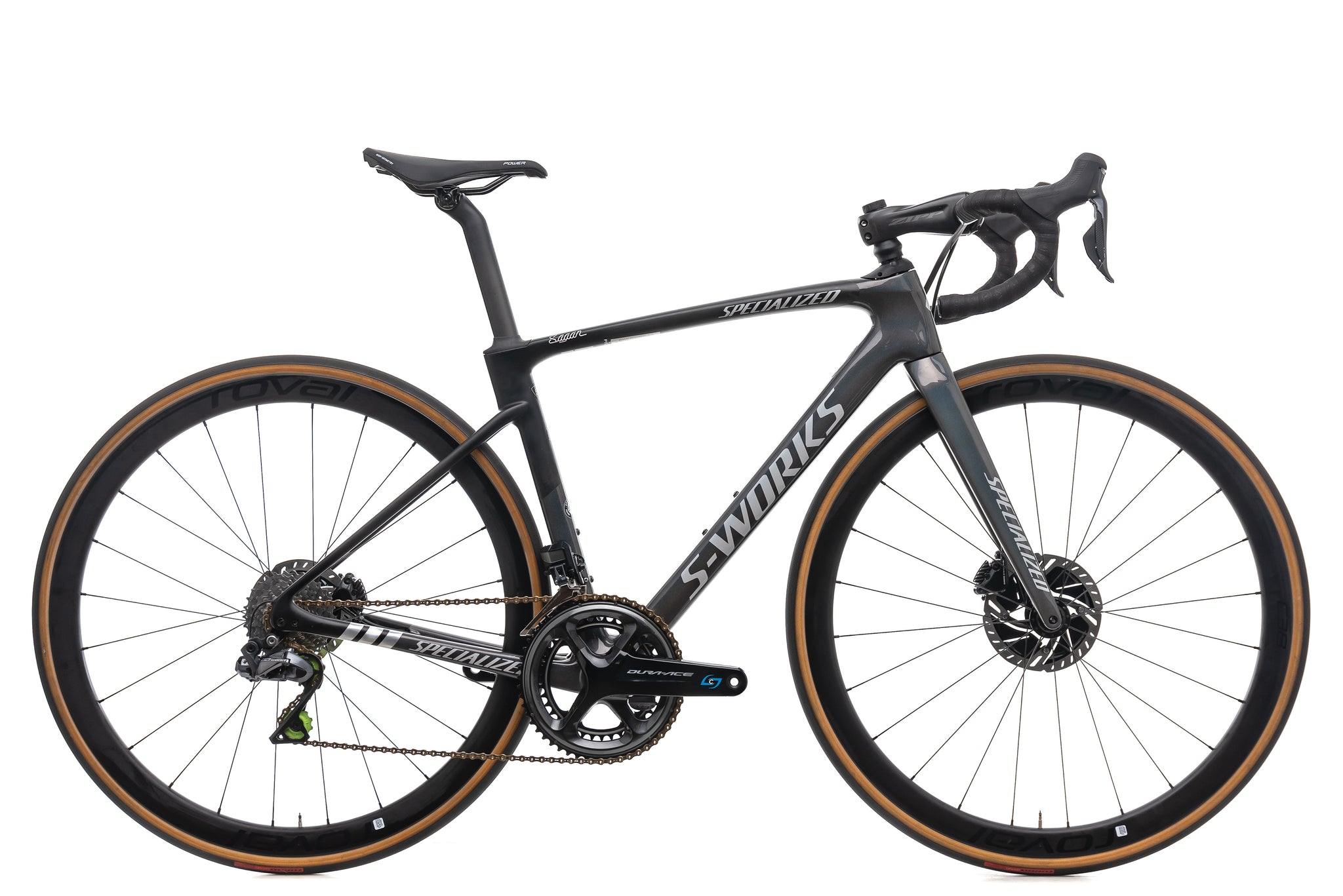
The Specialized Roubaix uses dropped seat stays in the rear and Future Shock in the front to increase comfort.
Popular endurance bikes like the Specialized Roubaix and the Trek Domane employ unique technology to further maximize rider comfort. Specialized’s Future Shock adds a coil spring suspension element under the stem to absorb impacts. Stiffness can be adjusted for the terrain or your comfort needs. Trek’s IsoSpeed technology decouples vertical parts of the frame like the seat tube and fork steerer from the rest of the frame using pivots and bushings. This decoupling helps further deaden vibration and impacts. If you’re interested in learning more, these technologies have been explored in more detail in our Roubaix vs. Domane comparison article.
While the extra technology in the Roubaix and Domane can improve comfort, most modern endurance bikes are extremely comfortable already thanks to big tires and frame compliance. Some find the added features of the Roubaix and Domane to be essential. Others may find it needlessly complicated. Though obviously biased as a Cannondale representative, I asked Chad Moore about it and he fell into the latter camp.
“Bigger tires with lower pressure make the most difference and it's even more effective when coupled with the frame and component design,” he says. “If it works for you then great, but I think you can design compliance and achieve great comfort without adding that level of complexity to the bike.”
Why should you ride an endurance bike?
For the average rider, increasing comfort can improve your speed more than aerodynamics, weight, or stiffness. Last year I interviewed bike fit guru, Andy Pruitt, (read the full article here) who has worked extensively with some of the world’s best pro riders and teams. In his experience, a less aggressive and more comfortable riding position was beneficial to both highly experienced and novice riders.
“Comfort helps you go faster,” Pruitt explains. “If you’re more comfortable you’re going to be able to go faster and harder for longer, rather than fighting to stay in some aerodynamic position.”
Some of the engineers who design bikes agree.
“Every minute you can stay in your position will save you more time than a fancy tube shape,” says Wolfgang Kohl, Product Engineer at Canyon. Kohl is one of the engineering minds behind the race-winning Canyon Speedmax aero road bike, so he knows a thing or two about going fast.
“If you want to keep yourself fit and try to get some PRs or KOMs on Strava, you don’t need a super aero bike!” Kohl says. “Aero is sometimes overrated on the magazine or customer side. For most people, a comfortable bike that allows you to stay in a good position will keep you fresh for rides that are three hours or longer. That is a much better riding experience than doing the same ride on a super-aero bike with an aggressive position and tube shapes that do not flex.”
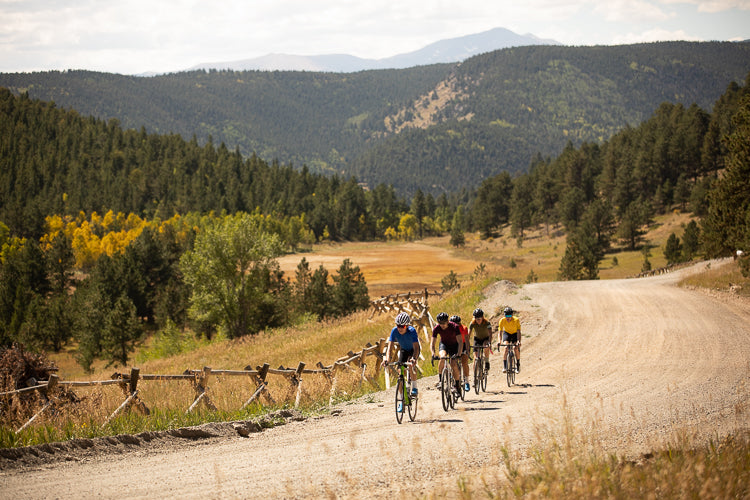 Pruitt also makes the point that a more comfortable bike will be a bike that you’re more likely to ride. The whole point of having a bike is to ride it and enjoy it, right? A racing bike that hurts your body and can’t be ridden for more than an hour or over long distances can detract from the experience of cycling.
Pruitt also makes the point that a more comfortable bike will be a bike that you’re more likely to ride. The whole point of having a bike is to ride it and enjoy it, right? A racing bike that hurts your body and can’t be ridden for more than an hour or over long distances can detract from the experience of cycling.
“The riding experience should be the main reason a cyclist buys an endurance bike,” says Chad Moore. “The experience is the focus. With endurance bikes, we're not as concerned about going blazingly fast all the time, and we're not worried about saving five watts because the down tube is the right shape.”
 But don't assume that endurance bikes aren’t aerodynamic or fast. Modern endurance bikes are still designed for performance.
But don't assume that endurance bikes aren’t aerodynamic or fast. Modern endurance bikes are still designed for performance.
“Prioritizing comfort doesn't mean that we don't think about speed during the design process, or that we don't wind tunnel test to benchmark a bike against competitors,” says Moore. “It just doesn't dictate the design of the bike as much. With an endurance bike, we're not going to compromise its key comfort traits to make it a tiny bit more aero or lighter. But the gap between road race bikes and endurance bikes is getting a lot smaller. That's a trend that we're seeing. And I'm anticipating in the future, you'll start to see a more condensed range of road race bikes form all brands — a bigger focus on what we now call endurance bikes.”
“The majority of riders should try to have more fun on their bikes,” says Kohl. “It’s good to have the freedom to choose a riding position that fits your body. A lot of us don’t have a lot of time to do stretching and core stability every day or have a physiotherapist like the pros. We’re office workers, craftsmen, or mothers, we have full-time jobs and ride bikes to stay fit and have a good time with our friends. To do that you have to have a bike that fits and gives you comfort. For a lucky few this might be an aggressive aero race bike. But it’s more likely an endurance bike.”
Who should ride a road race bike?
 Knowing everything that’s been laid out above, is there still a reason to choose a road racing bike over an endurance bike? Well, of course, if you simply like the looks or feel of a true road racing bike, don’t let me stop you! Having a bike you love is key. If that must be a race bike, then you probably won't mind sacrificing some comfort to satisfy your desires.
Knowing everything that’s been laid out above, is there still a reason to choose a road racing bike over an endurance bike? Well, of course, if you simply like the looks or feel of a true road racing bike, don’t let me stop you! Having a bike you love is key. If that must be a race bike, then you probably won't mind sacrificing some comfort to satisfy your desires.
If you’re a competitive rider who loves racing and fast group rides, then the marginal gains of better aerodynamics or more stiffness could be worthwhile.
If you’re a fit rider who can easily handle a lower and more aggressive riding position and a stiffer ride, then you may not need the extra comfort an endurance bike offers.
If your local roads are smooth as glass and you rarely venture onto bumpy, rough roads, then the extra tire clearance and compliance of an endurance bike might be unnecessary.
What about gravel bikes?
 If the relaxed geometry, extra tire clearance, and compliance of an endurance bike is good, then why not take it further and get a gravel bike? Gravel bikes have even more relaxed geometry and are designed to fit massive 38-45mm tires. They are made to keep riders comfortable on rough and loose surfaces, which means you'll be just fine on smooth surfaces too. This may be a good idea for some riders. But keep in mind what type of riding and terrain you actually need your bike for. When should you choose a gravel bike over an endurance bike?
If the relaxed geometry, extra tire clearance, and compliance of an endurance bike is good, then why not take it further and get a gravel bike? Gravel bikes have even more relaxed geometry and are designed to fit massive 38-45mm tires. They are made to keep riders comfortable on rough and loose surfaces, which means you'll be just fine on smooth surfaces too. This may be a good idea for some riders. But keep in mind what type of riding and terrain you actually need your bike for. When should you choose a gravel bike over an endurance bike?
“So we generally don’t talk about a road race bike being versatile enough to ride on dirt roads,” says Chad Moore. “Likewise we're not going to use the word ‘gravel’ when we talk about endurance bikes. For an endurance bike like the Synapse, we would talk about ‘all roads’ and ‘dirt roads’ but we don’t go very far beyond that. The rider that's getting an endurance bike, is not really going to be riding the type of technical gravel and trails that dedicated gravel bikes are designed for.”
If you’re a road rider looking to explore dirty terrain beyond the pavement, can you still ride an endurance bike on gravel?
“Sure,” says Moore. “Before gravel bikes, plenty of us hit Switzerland Trail (a local four-wheel-drive trail) on skinny tires. I’ve ridden single track on 28mm tires. You could squeeze 33, maybe even 35mm tires on an endurance bike like the Synapse and ride on whatever terrain you want. For most, the limitations are going to come with the rider before it comes with the bike. But I'd say once you start hitting singletrack or gravel with chunky or loose surfaces, doing it on a dedicated gravel bike is much nicer.”
Riders who spend the majority of their time on pavement or smooth dirt will still be better served by an endurance bike. The bike will be lighter and more efficient with more moderately sized tires. Gravel bikes work great on pavement, but their geometry often makes them feel more sluggish compared to dedicated road bikes.
“Gravel frames change so much to fit a big 40-45mm tire or a 2.1” 650b tire,” explains Moore. “You need super long chainstays to clear tires in that size range and that slows down the handling some. You end up with a bike that's purpose-built for really aggressive gravel and erratic terrain. They can feel good on the road but they really come alive on more aggressive gravel.”
Final thoughts
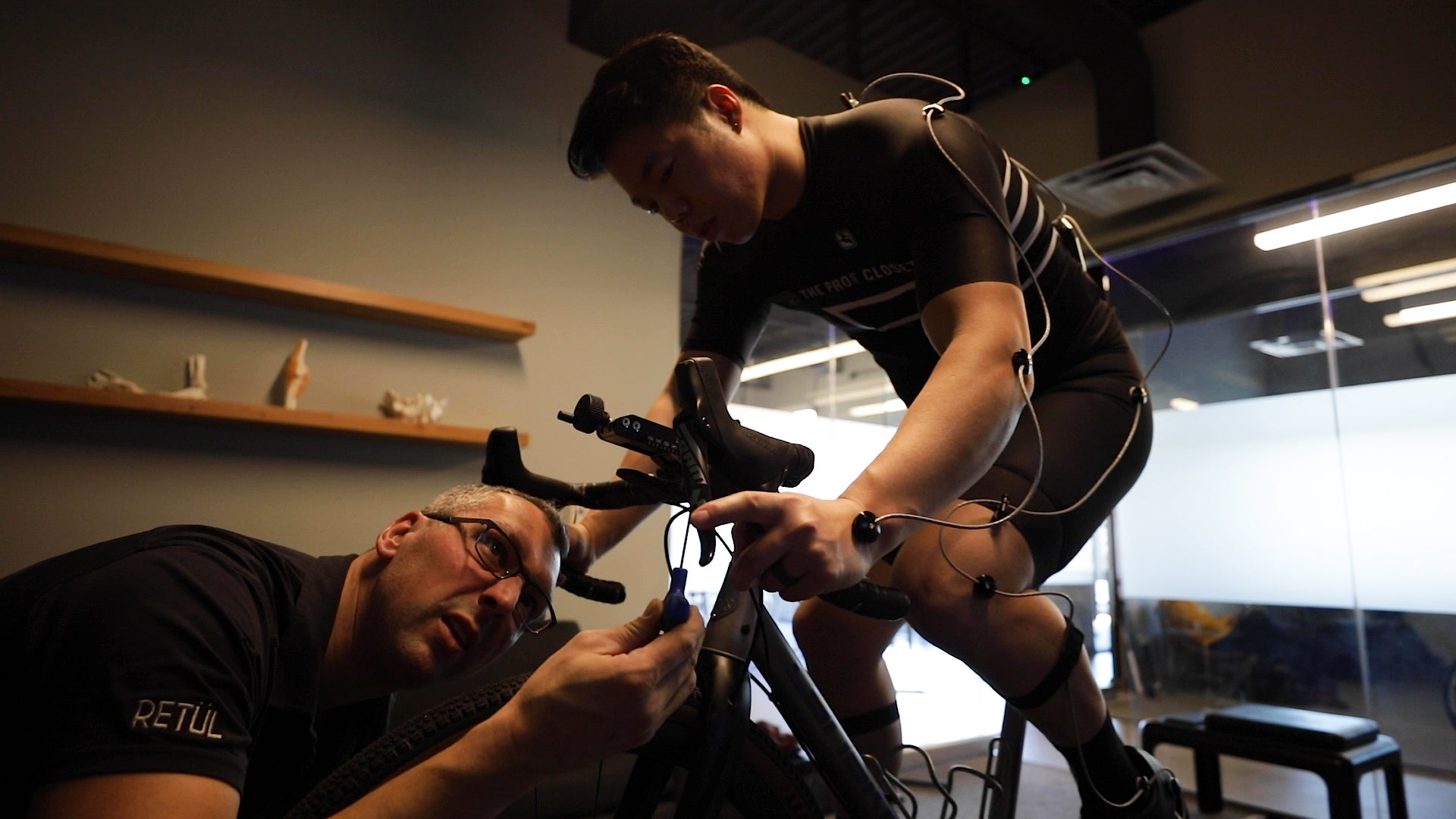 After years of discomfort, I left low, aggressive race bikes behind.
After years of discomfort, I left low, aggressive race bikes behind.
Nowadays I’m older, have lost a lot of flexibility, and suffered several injuries. I find that low race positions cause numbness and exacerbate issues with my hands, shoulders, and back so my fitter suggested adopting a much more relaxed riding position. After a few years riding a Specialized Roubaix, a Trek Domane, and a Cannondale Synapse I don’t miss more aggressive race bikes, and feel just as fast on my endurance bike.
All this being said, it is possible to feel comfortable on a race bike with a proper bike fit. It’s also possible to feel uncomfortable on a bike designed to be comfortable if your fit is off. Whatever bike you choose, getting professionally fit is always a good idea. (Read about my experience getting a professional Retül bike fit here.)
These days, I ride my bike to stay fit and enjoy the outdoors. An endurance bike is perfect. It's quick enough to attack Strava segments and hang on fast group rides. And I can still veer off the pavement and do all my local gravel roads. For me, it’s the perfect middle ground, do-it-all road bike.
Do you ride an endurance road bike? Or is there a different option that works better for you? Let me know in the comments!


